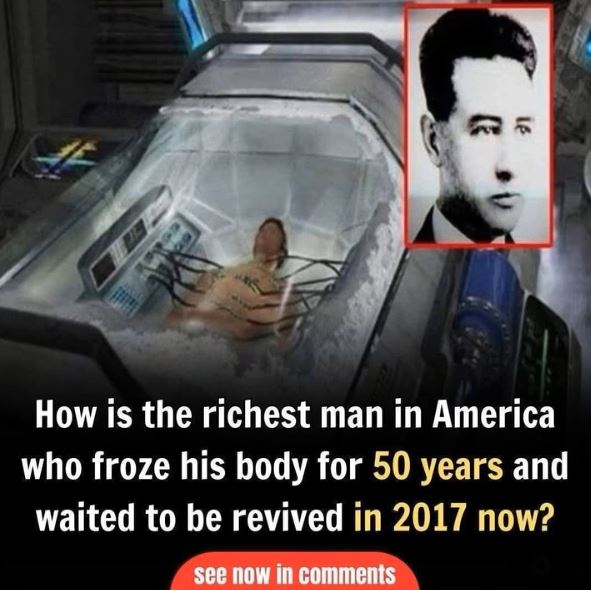Imagine making a decision so bold that it places you in the history books not for what you did in life, but for what you hoped would happen after. This is the story of Dr. James Bedford, a university professor who, in 1967, became the first human to be cryonically preserved. Faced with a terminal cancer diagnosis, Bedford learned about the then-fantastical idea of freezing a human body to be revived by advanced medicine in the far future. While it sounded like science fiction, he saw it as a genuine scientific frontier, a chance to contribute to a future he would never see.
The process began just after he passed away. Scientists worked quickly, draining the blood from his body and replacing it with a special chemical cocktail designed to protect his cells from freezing. Then, he was placed in a container of liquid nitrogen, a substance so cold it halts all biological activity essentially forever. Bedford knew he was stepping into uncharted territory. He wasn’t expecting to wake up in a few years; he was making a statement of faith in human progress, hoping that his preservation might one day provide the clues needed to conquer diseases like the one that took his life.
What is truly remarkable is how well his body has endured the passage of time. Decades after his preservation, experts inspected his remains and were amazed. His features were still clear, and his organs were in a state that suggested the preservation technique had worked far better than anyone in the 1960s could have hoped. This wasn’t just a theory anymore; it was physical evidence that human tissue could survive the deep freeze for extended periods, giving a major boost to the entire field of cryonics.
More than fifty years have now passed since that day. Dr. Bedford remains frozen, a silent pioneer in a capsule of time. His choice opened the door for hundreds of others who have since followed, all sharing a common hope. His story challenges our very definitions of life and death, forcing us to consider the limits of medicine and the power of future technology. He is a physical symbol of humanity’s timeless quest to overcome its greatest limitation, a man who chose to wait for science to catch up to his dream.


